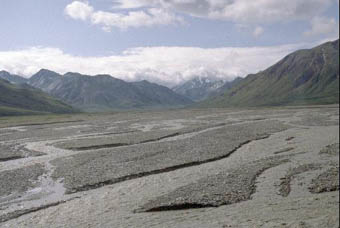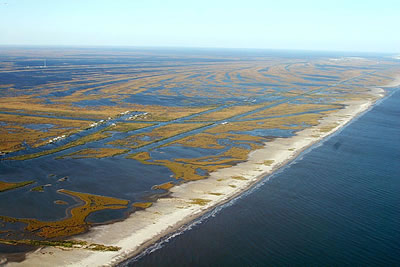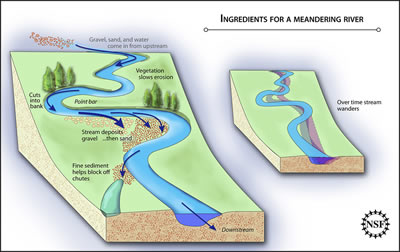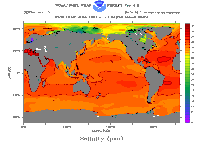This is a picture of the Colorado River near Hoover Dam.
Click on image for full size
C. Alexander
Rivers
Rivers are very important to Earth because they are major forces that shape the landscape. Also, they provide transportation and water for drinking, washing and farming. Rivers can flow on land or underground in deserts and seas. Rivers may come from mountain springs, melting glaciers or lakes.
A river's contribution to the water cycle is that it collects water from the ground and returns it to the ocean. The water we drink is about 3 billion years old because it has been recycled over and over since the first rainfall.
A delta is where a river meets the sea. Usually the river flows more slowly at the delta than at its start because it deposits sediment. Sediment can be anything from mud, sand and even rock fragments. A special environment is created when the fresh water from the river mixes with the salty ocean water. This is environment is called estuary.
The longest river is the Nile River in Africa, and the Amazon River in South America carries the most water. The muddiest river is the Yellow River in China.
Last modified August 27, 2008 by Lisa Gardiner.
You might also be interested in:

The water at the ocean surface is moved primarily by winds. Large scale winds move in specific directions because they are affected by Earth’s spin and the Coriolis Effect. Because Earth spins constantly,
...more
Sneeze into a pile of dust and the particles fly everywhere. Sneeze into a pile of rocks and they stay put. That’s because they have more mass. You need more force than a sneeze to move those rocks. Wind
...more
The Gulf of Mexico: what role will the Mississippi River play in oil washing ashore and into delta wetlands? One of the spill's greatest environmental threats is to Louisiana's wetlands, scientists believe.
...more
In a feat of reverse-engineering, Christian Braudrick of University of California at Berkeley and three coauthors have successfully built and maintained a scale model of a living meandering gravel-bed
...more
Rivers are very important to Earth because they are major forces that shape the landscape. Also, they provide transportation and water for drinking, washing and farming. Rivers can flow on land or underground
...more
One process which transfers water from the ground back to the atmosphere is evaporation. Evaporation is when water passes from a liquid phase to a gas phase. Rates of evaporation of water depend on factors
...more
About 70% of the Earth is covered with water, and we find 97% of that water in the oceans. Everyone who has taken in a mouthful of ocean water while swimming knows that the ocean is really salty. All water
...more














